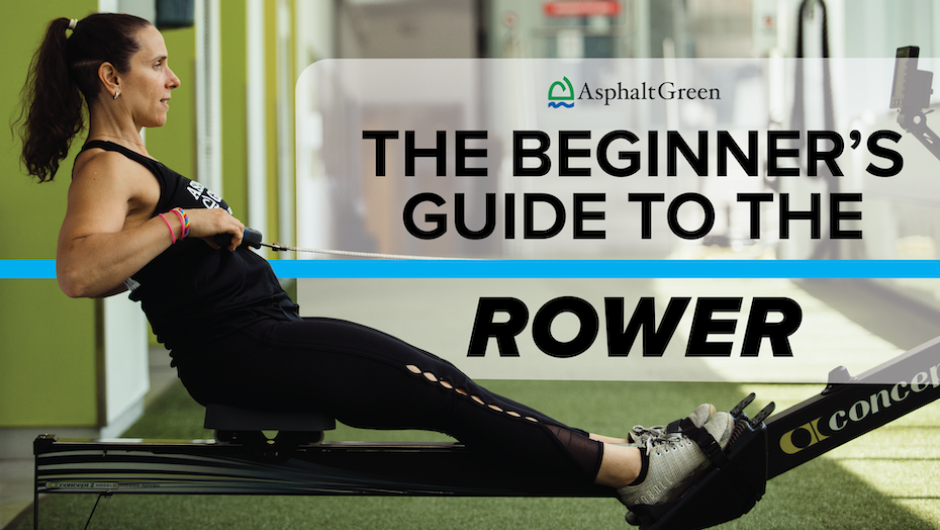The rower, sometimes called an indoor rowing machine, ergometer, or erg, simulates (you guessed it!) the action of rowing a boat. People have been rowing for thousands of years to get from place to place, but some fitness fanatics figured out that it makes for a great workout, too. The rower engages 80% of the major muscle groups in both your upper and lower body – it is truly a full-body training machine.

It can be used to meet a variety of fitness goals, from cardio training, to warming up before a strength routine, to actual strength training for novice trainees. The fluid movement of rowing skips the impact on your joints caused by running or jumping exercises. But, because you can adjust the rowing machine’s resistance level, it can make for a more intense workout than other low-impact exercises.
Get Set Up
First, you’ll need to pick the right resistance level, called a damper setting. The Concept 2 rower simulates water and it’s best that beginners use a damper setting between 4 and 5. In fact, even Olympic-level rowing athletes usually train at that setting.
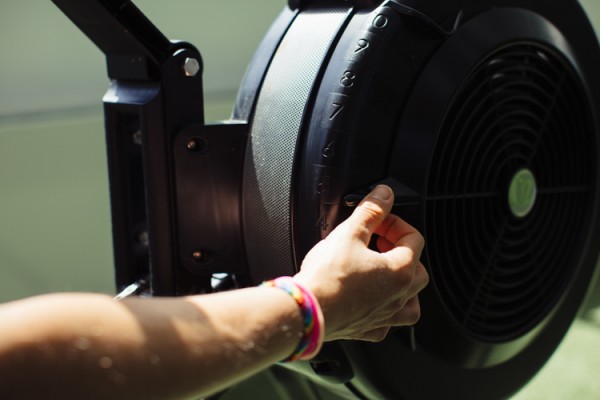
When you sit down on the rower, you’ll need to adjust the foot pedals so that the straps lie across the widest part of your foot. Make sure to position the foot pedals so that you have enough ankle mobility – you’ll need it to generate force during the row. You should be able to lift your heels off the pedals without difficulty.

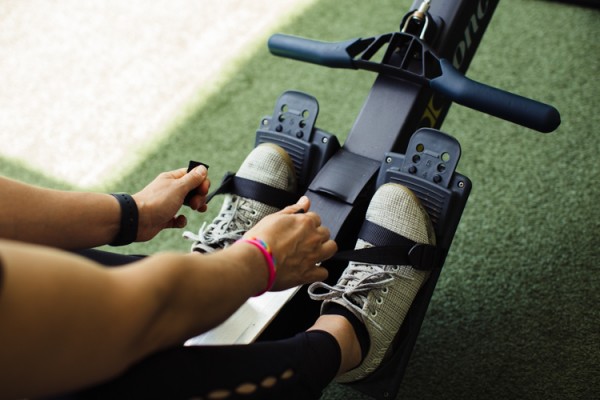
Finally, it’s time to grab the machine’s handle (called a paddle because you’re in rowing mode now) and start to row! Grip the paddle loosely in your fingers, not the palm of your hand, with your pinky finger hanging slightly off the end – be sure not to grip too hard.
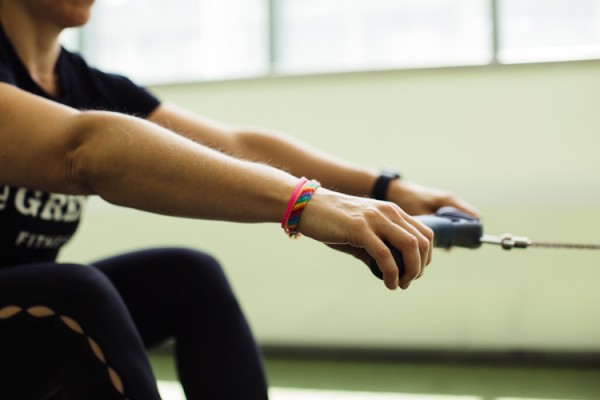
The Mechanics of Rowing
The mechanics are the most important part of rowing. They are broken down into four stages: catch, drive, finish, and recovery. To get the most out of your workout you’ll need to get your form right in each one.
If you’re just starting out, focus most of your time on practicing the mechanics. Mistakes in your form will create inefficiency and keep you from getting the best workout. Start low and slow! Consistency, not high resistance level or speed, is the key to getting the results you want from the rower.
The Catch - Every stroke of the rower begins with the catch, which simulates the moment a boat’s oars hit, or catch, the water. You’ll want to ensure that you have the correct form in the catch so that you’re in the right place at the right time to apply as much force as possible in the next stage. If you miss the catch, you’ve lost the entire stroke.
Seated on the rower, roll your shoulders back and down, sit tall, and hinge at your hips, so that they are behind your shoulders with your torso leaning forward about 15 degrees ahead of vertical. Your elbows should be just above or to the side of your knees. Slide the seat toward the flywheel so that your shins are as vertical as possible without bending your back.
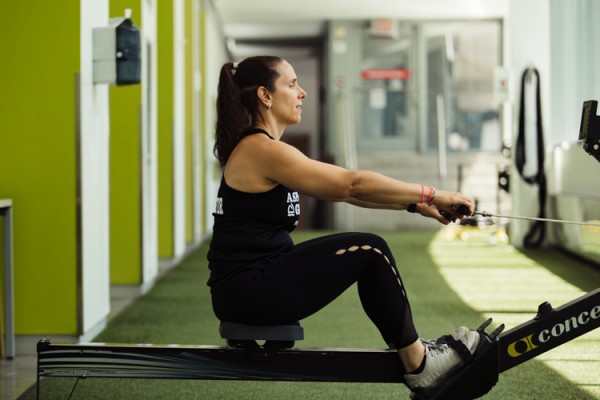
You’ll want to form a solid base with your arms and core while you push against the machine’s resistance with your legs for the first part of the drive. Flex your back to pull your shoulders down, and flex your arms and abdominal muscles. You should feel like a coiled spring, ready to power yourself through the drive.
The Drive - The drive is the part of the stroke where the user generates power against the machine’s resistance. This is where you’re doing most of the physical work, but that doesn’t necessarily make it the most important stage. All the other stages help ensure that your drive – and your workout – is as efficient as possible.
As you move through the drive, you’ll engage your legs, body, and arms in that order. A lot of beginners focus on pulling predominately with their arms – but rowing is a big push with your legs, not a big pull with your arms! Legs are your primary driver, so push off with them first. Keep your arms, back, and core muscles flexed, like you had them in the catch, but don’t move them just yet.
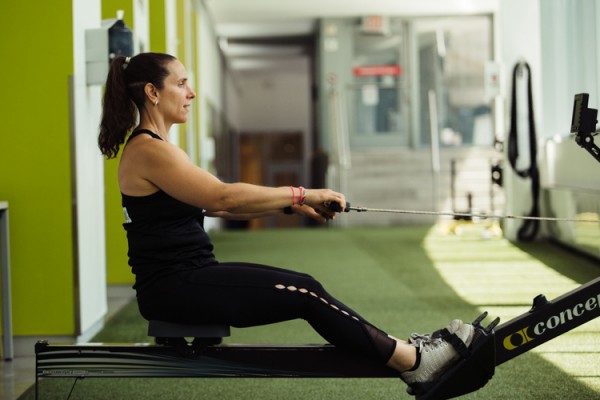
Once your legs are just about all the way extended, it’s time for the rest of your body to get involved. Pull with your lower back muscles and your glutes to move your shoulders back behind your hips, so that your body is about 15 degrees behind vertical. Brace through your midline to keep your torso upright. Finally, engage your arms, and pull the handle into your chest to come to the finish. Remember that order: legs, body, then arms!
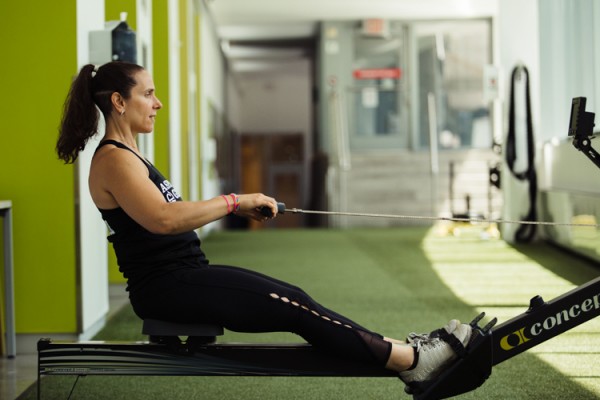
The Finish - In each stroke cycle, the finish bookends the catch. You should have your legs extended, but not locked. Your spine should be fully upright, and you should be leaning away from the front of the machine at a 15-degree angle, with the handle pulled against your chest. It can be tempting to lean farther back because it feels like you’re doing more work, but the tradeoff is efficiency.
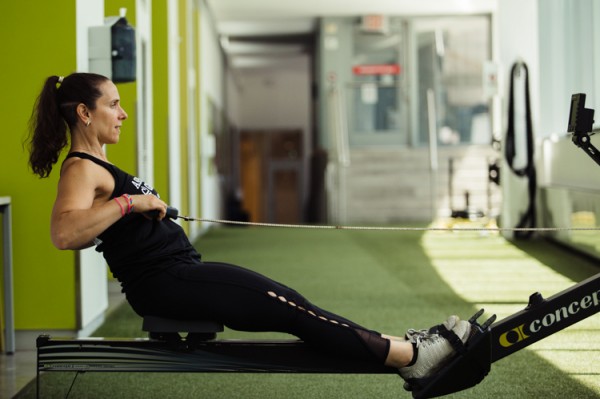
As you’re starting to practice your stroke, it’s a good idea to focus on the catch and the finish. Practice holding these two positions during your row, and think about how your positioning can contribute to enhancing your performance in the drive. Better yet, you can work with a personal trainer to help you achieve the perfect form.
The Recovery - The recovery stage is simply the drive, but in reverse. That means arms, body, then legs! It can be tempting to relax your legs first, or even relax everything all at once. But rowing is all about the fluid, cyclical motion of reversing the drive during the recovery.
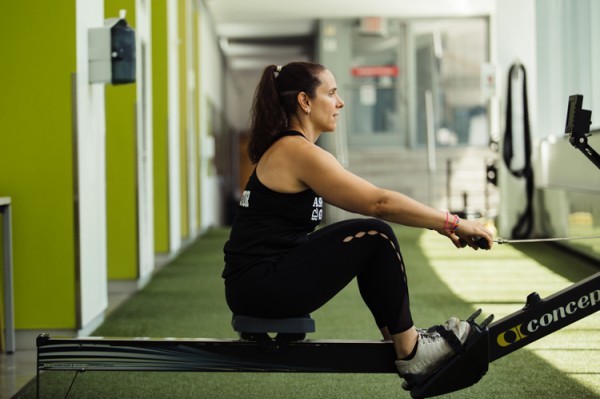
First, extend your arms, then return your body to the slightly forward angle it was in during the catch, and then relax your legs. Make sure you keep your midline flexed to keep your torso tall. Take your time during the recovery stage, it should take longer than the drive. Focus on returning to the catch position correctly, ready to begin the cycle again.
Beginner’s Workout
Ready to try the rower out for yourself? Our trainer recommends a 10-minute session on the rower at a damper setting of 5 or below. Aim for between 22 and 26 strokes per minute. This can be a great warmup for strength training or a whole cardio workout on its own if you’re just starting out on your fitness journey.
You can find rowing machines in the middle of our Upper East Side fitness center on both levels, and in the fitness center on the C-Level at our Battery Park City location.

